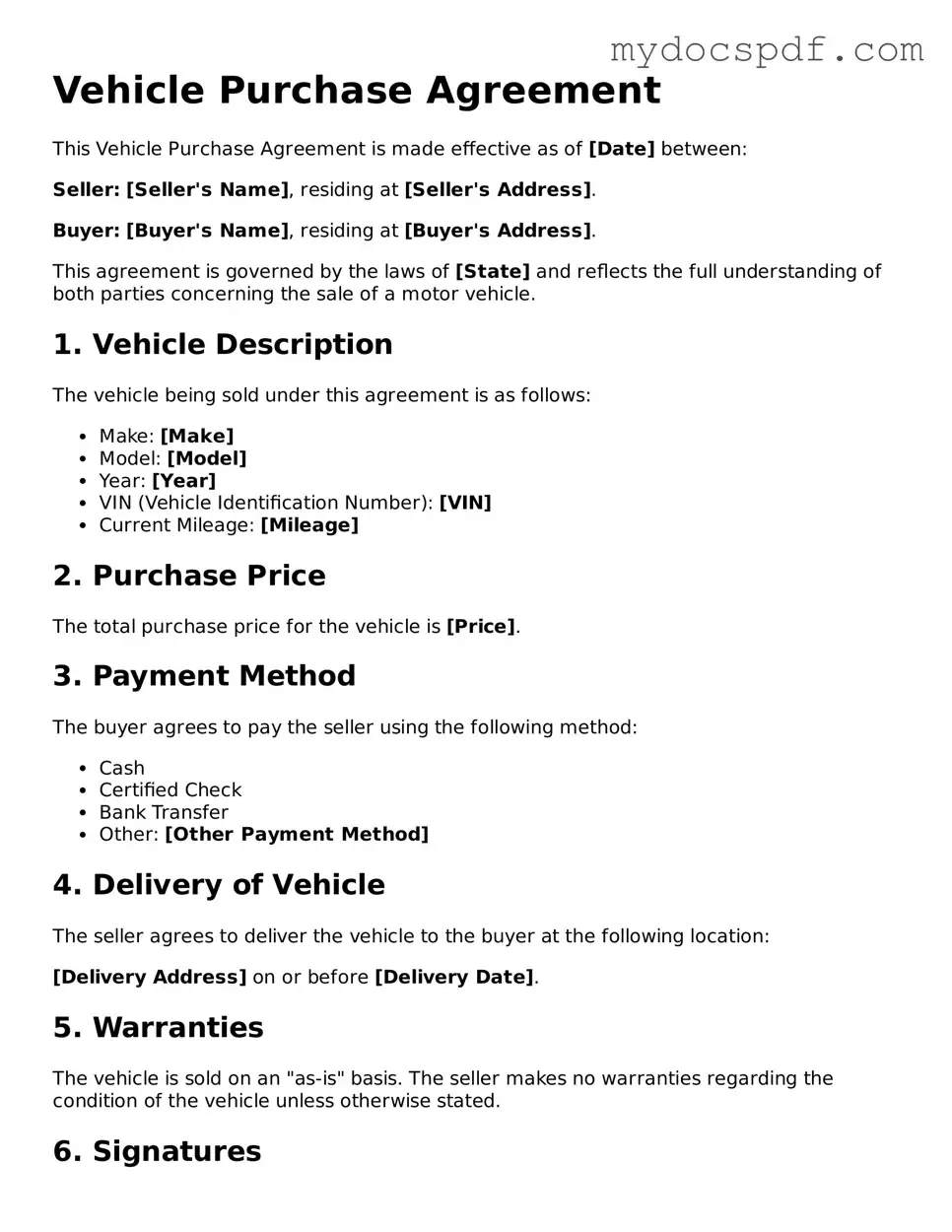Vehicle Purchase Agreement
This Vehicle Purchase Agreement is made effective as of [Date] between:
Seller: [Seller's Name], residing at [Seller's Address].
Buyer: [Buyer's Name], residing at [Buyer's Address].
This agreement is governed by the laws of [State] and reflects the full understanding of both parties concerning the sale of a motor vehicle.
1. Vehicle Description
The vehicle being sold under this agreement is as follows:
- Make: [Make]
- Model: [Model]
- Year: [Year]
- VIN (Vehicle Identification Number): [VIN]
- Current Mileage: [Mileage]
2. Purchase Price
The total purchase price for the vehicle is [Price].
3. Payment Method
The buyer agrees to pay the seller using the following method:
- Cash
- Certified Check
- Bank Transfer
- Other: [Other Payment Method]
4. Delivery of Vehicle
The seller agrees to deliver the vehicle to the buyer at the following location:
[Delivery Address] on or before [Delivery Date].
5. Warranties
The vehicle is sold on an "as-is" basis. The seller makes no warranties regarding the condition of the vehicle unless otherwise stated.
6. Signatures
By signing below, both parties acknowledge and agree to the terms outlined in this Vehicle Purchase Agreement.
- Seller's Signature: ____________________________ Date: _______________
- Buyer's Signature: ____________________________ Date: _______________
Both parties should retain a copy of this signed agreement for their records.
